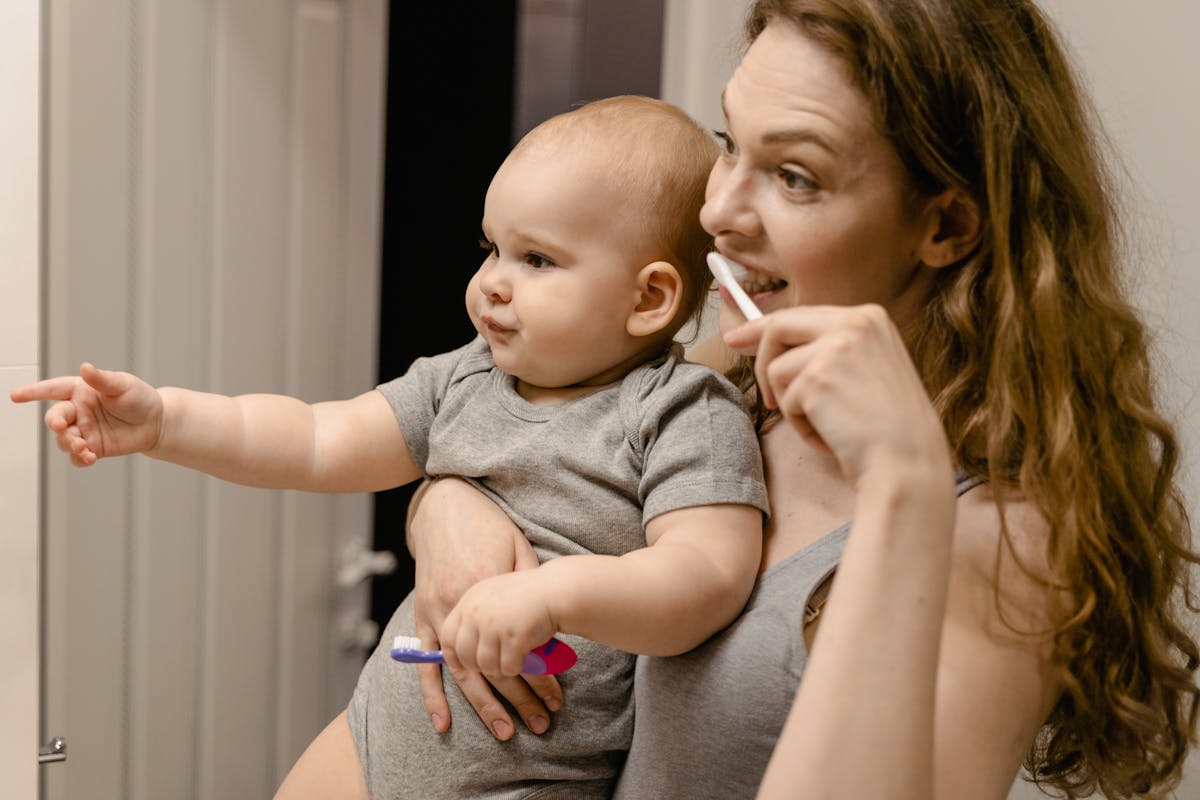Crying, fever and irritation are some of the symptoms that can occur during the baby’s teething process . Teeth begin to appear around six months, which can cause discomfort and pain for the baby’s sensitive body.
This is not a rule, as some children have local or generalized reactions during the growth process that can lead to delayed teething. In this text, you will find out everything that involves the birth of baby teeth , from the symptoms to pain relief. Enjoy reading!
What is the first set of teeth?
This is the stage where first teeth begin to appear in the mouth. It commonly starts between the first six and nine months of birth but may take up to one year in some children.
However, a baby’s set of teeth is complete when the child grows all the 20 baby teeth that come in; 10 of these are the lower set, and 10 are the upper set. This usually takes up to three years to occur. After that, the baby teeth will begin to fall out, and permanent teeth will come in to replace them.
You should take the child for regular checkup by pediatricians and then dentists throughout the teething process, so they can do proper analysis about oral health and age as well as on the basis of intensity, how much pain is, and take care of this little soul.
What is the order in which a baby’s teeth appear?
The baby’s first teeth are known as deciduous, developing in pairs from the incisors-which are on the front of the mouth to the second molars at the back of the mouth. Usually, they come in between 6 months to 30 months.
- 6 to 12 months: lower incisors;
- 7 to 10 months: upper incisors;
- 9 to 12 months: upper and lower sides;
- 12 to 18 months: first upper and lower molars;
- 16 to 20 months: upper and lower canines;
- 20 to 30 months: lower and upper second molars.
It is important to note that the age at which the first appearance of teeth occurs varies. For example, sometimes a child starts growing molars before incisors.
Although the teething is late, a baby who is 1-year-old and not yet teething should go to a dentist. Only a dentist can tell the baby what and how to do it best.
What are the signs of teething in babies?
Teething in babies includes sore or swollen gums, painful with difficulty in eating, which increases drooling. Babies often insert their fingers or objects into their mouths due to an itching sensation.
Such babies with their first teeth sometimes may experience diarrhea, loss of appetite, sleeplessness, and fever. However, such symptoms of discomfort may also be associated with the diet of the child as they are not used to new dietary intake.
Is there any medicine for a baby’s first teeth?
Only your baby’s doctor and dentist can prescribe a medicine to relieve the symptoms of teething. However, there are some exercises that can reduce the pain that children feel during their first teething.
When your baby feels pain, massage his or her gums for a few minutes. To do this, don’t forget to wash your hands thoroughly to avoid possible infections.
In addition, in the early years of teething, you can buy a teether ring for your child which is most often acceptable to be used in the alleviation of the pain caused by teething. Ensure that you ask if it is an agency-approved one.
Baby’s tooth care
This initial stage of teething, you have to pay a lot of attention to your baby’s breastfeeding because he tends to drool more during this period. The amount of breast milk should not choke him, hence it is advisable to feed him in a sitting position.
Check the little one’s fingers too, as they may someday become biting hazards by inserting their fingers into their mouth to alleviate sore gums. Sometimes, the face skin, particularly the chin, dries out and needs to be moisturized.
If you are using oral hygiene products they should be suitable for infants and toddlers and don’t be over zealous; for example, no need to put a great dollop of toothpaste on your brush or press hard on your gums.
